Developer Nigel Satterley has called for more skilled migration to help ‘solve’ the housing shortage.
Nigel Satterley, whose Satterley Property Group is the nation’s largest privately owned residential land developer, claimed that Australia had suffered an annual shortfall of 40,000 homes for over a decade. He claimed that without immigration changes to bring in more skilled workers, the situation wouldn’t improve.
“If we haven’t got the manpower, we can’t build them”, Satterley told The AFR on Sunday.
“We need the construction workers. The manufacturing is good, the machinery’s good. It’s workers”.
Housing Industry Association’s (HIA) chief economist Tim Reardon also warned that labour constraints in the construction industry mean that the nation can build only 200,000 to 220,000 new homes each year, which is less than required to solve the housing shortage.
“We don’t have enough people”, Reardon said.
“We can build 200,000 to 220,000 with the labour force we have at the moment, [but] getting to 250,000 is the point at which we need more skilled labour”.
HIA estimates that an additional 80,000 tradespeople are required nationwide. Reardon noted that many ‘tradies’ are opting to move to industries such as mining, while many school leavers are rejecting a career in the construction sector.
“The building industry still has an acute shortage of labour because we’re losing labour to the mining industry and other construction projects”, Reardon said.
Australia’s migration system is indeed too heavily weighted towards tertiary-educated people, as well as international students.
As reported by the Grattan Institute, “migrants who arrived in Australia less than five years ago account for just 2.8% of the construction workforce, but account for 4.4% of all workers in Australia”.
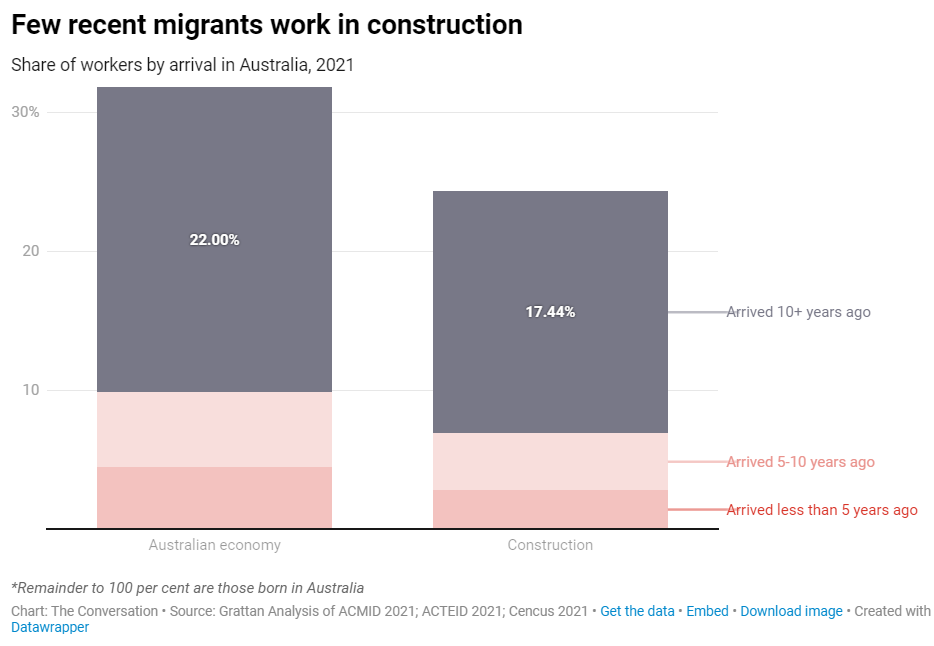
Therefore, migrants have added far more to housing demand than supply.
At the same time, Nigel Satterley’s claim that Australia had suffered an annual shortfall of 40,000 homes for over a decade and that the solution was more immigration is nonsensical.
Australia’s rate of housing construction over the past decade was far higher than the previous decade:

The problem is that Australia’s population growth via mass immigration has surged.
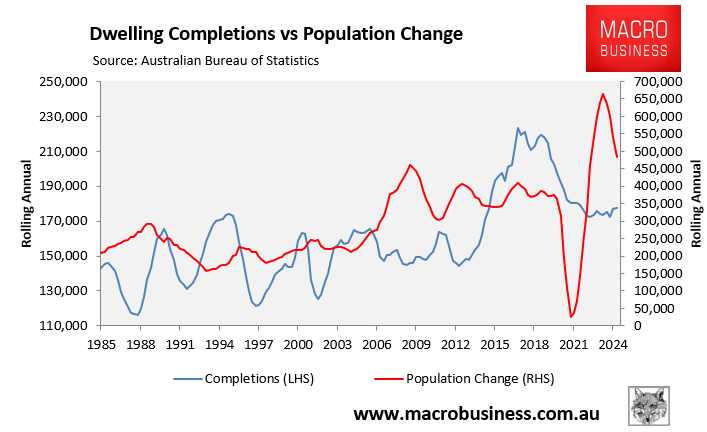
Therefore, the primary solution to Australia’s housing shortage is to significantly cut the level of immigration so that housing supply can catch up with demand.
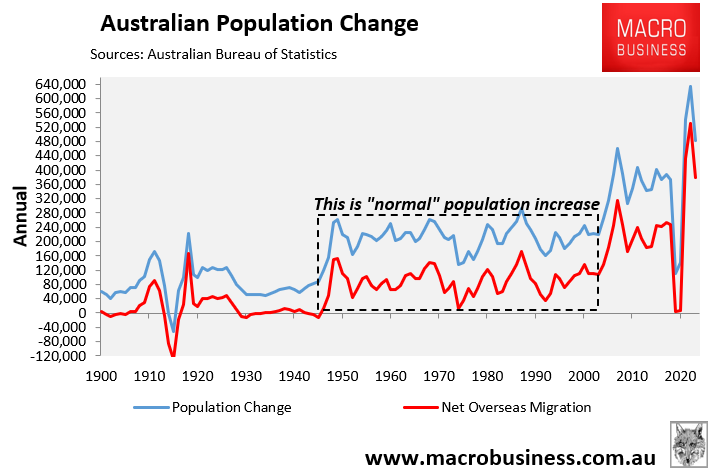
The entire concept of bringing in migrants to build homes for migrants is classic ‘tail wagging the dog’ economics, as illustrated below:
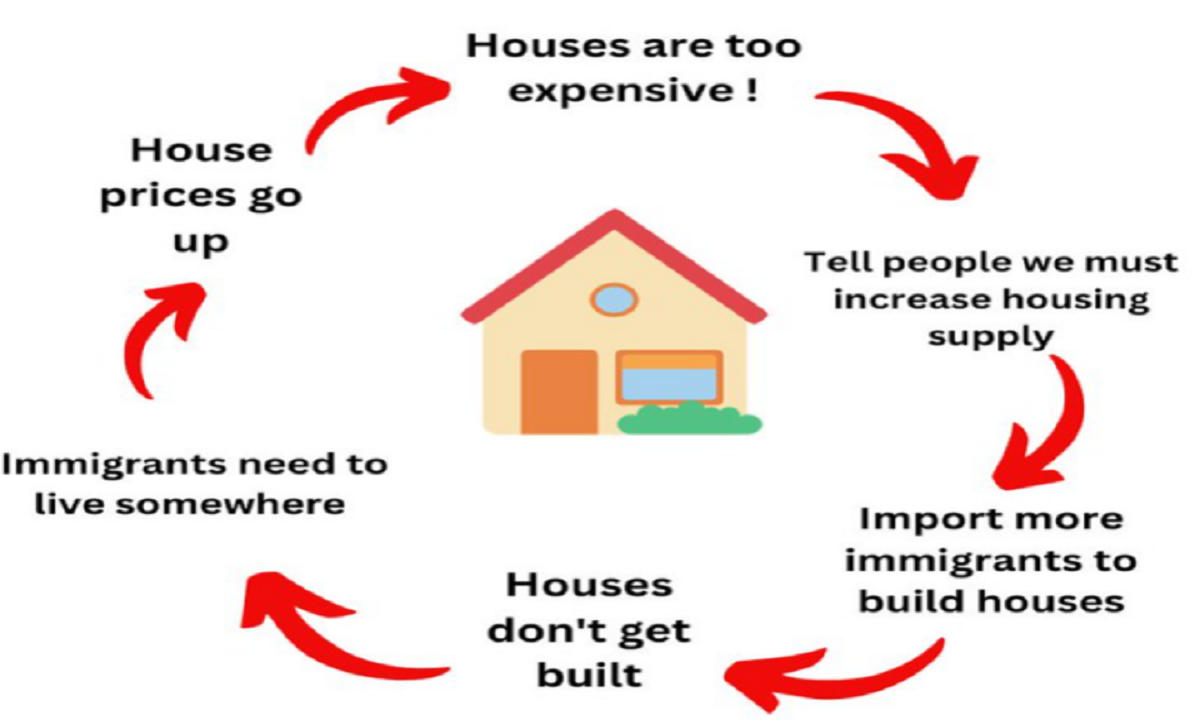
It is nonsensical to import more migrants to address a housing crisis caused by importing too many migrants.
The 2024 Population Statement from Treasury’s Centre for Population projects that Australia’s population will balloon by 13.5 million people in only 40 years:

Source: Centre for Population (December 2024)
This 13.5 million projected population increase will be driven by a permanently high net overseas migration of 235,000 annually, more than double the 90,000 average net migration in the 60 years following World War II.
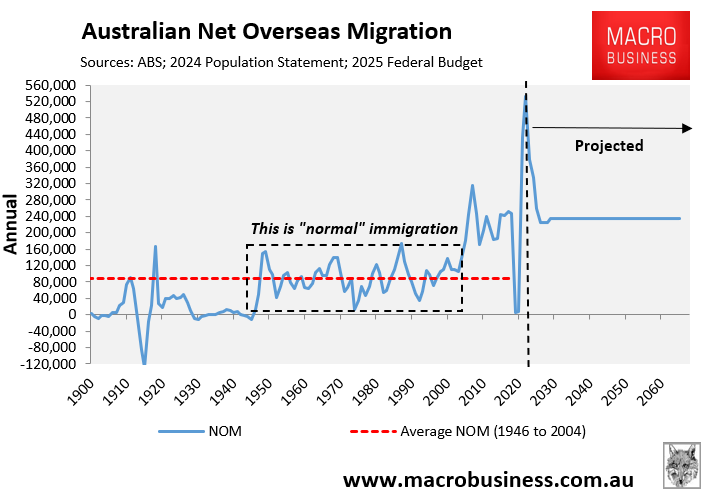
This 13.5 million projected population increase is equivalent to adding another Sydney, Melbourne, and Brisbane to the nation’s current population in only 40 years.
The housing, infrastructure, water supplies, and energy encompassed in these three major cities would need to be replicated in just 40 years to maintain current living standards, let alone improve them.
Australia has not built enough homes or infrastructure during the past 20 years of ‘Big Australia’ immigration. It will not do so in the following 40 years of Big Australia migration.
These are the inconvenient facts that policymakers and industry continue to ignore.

